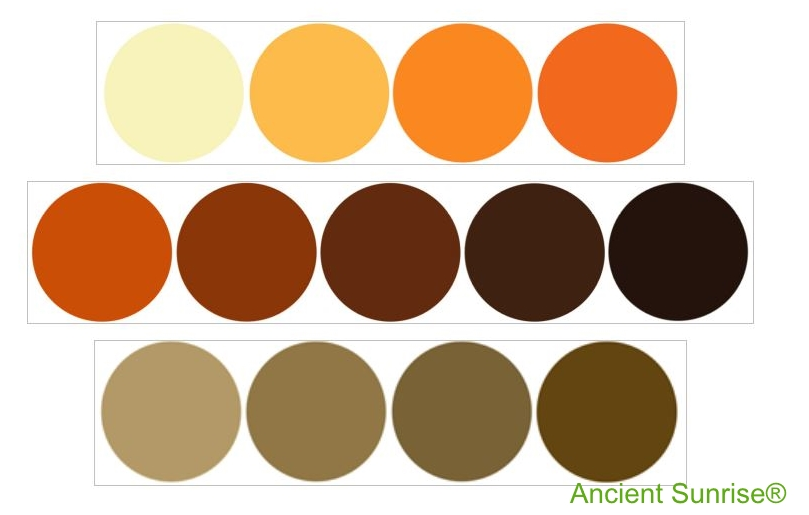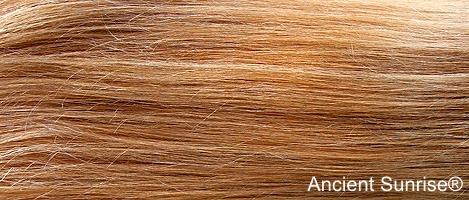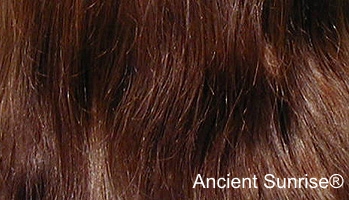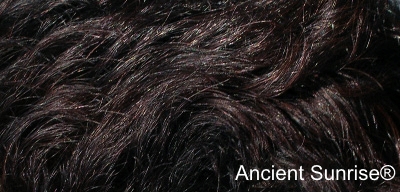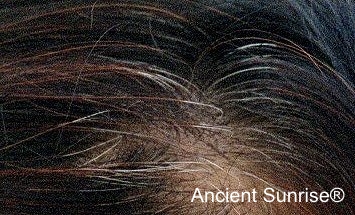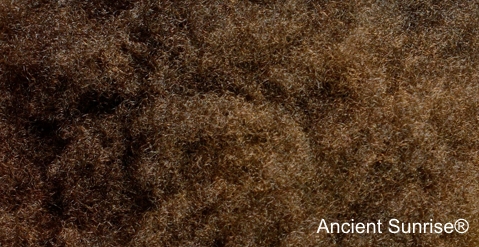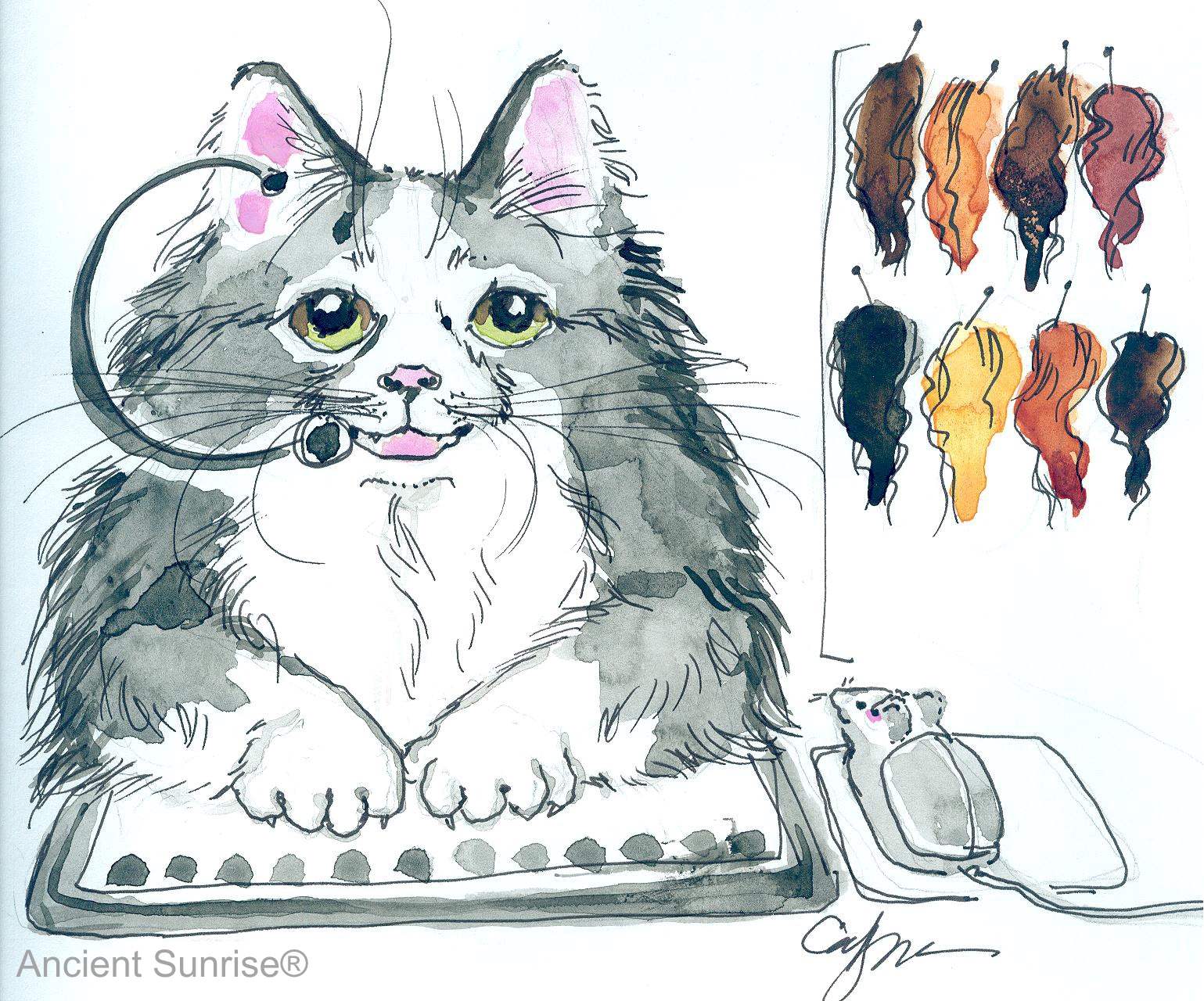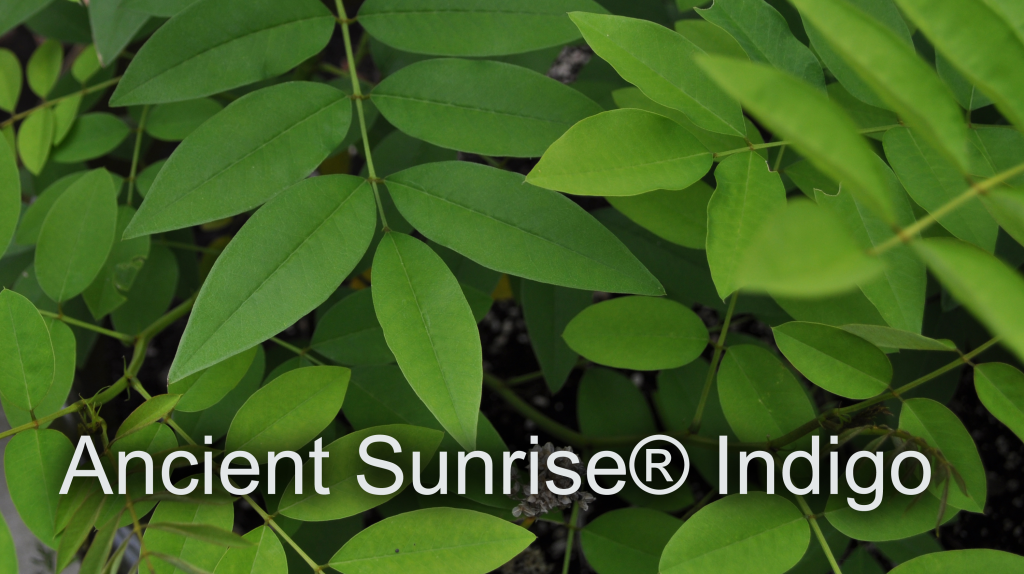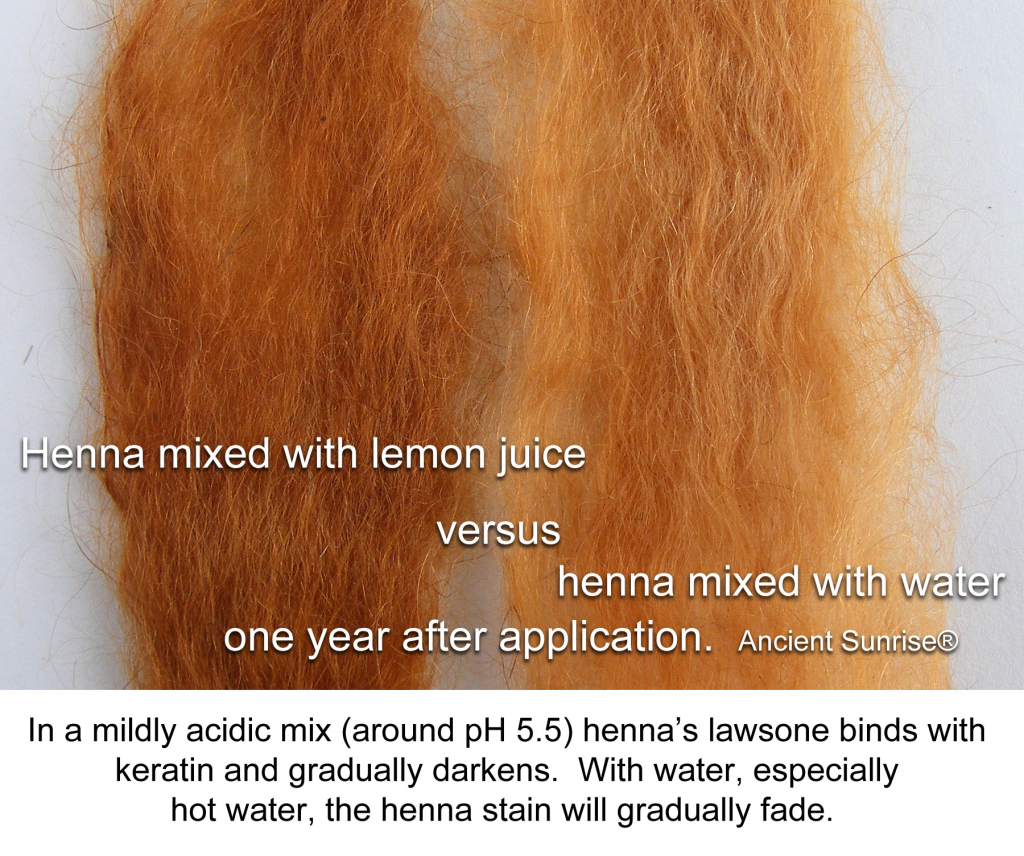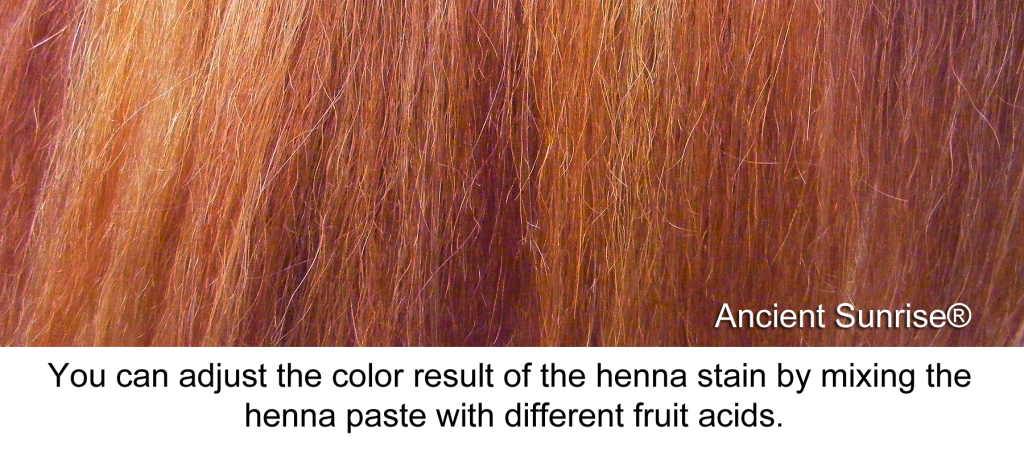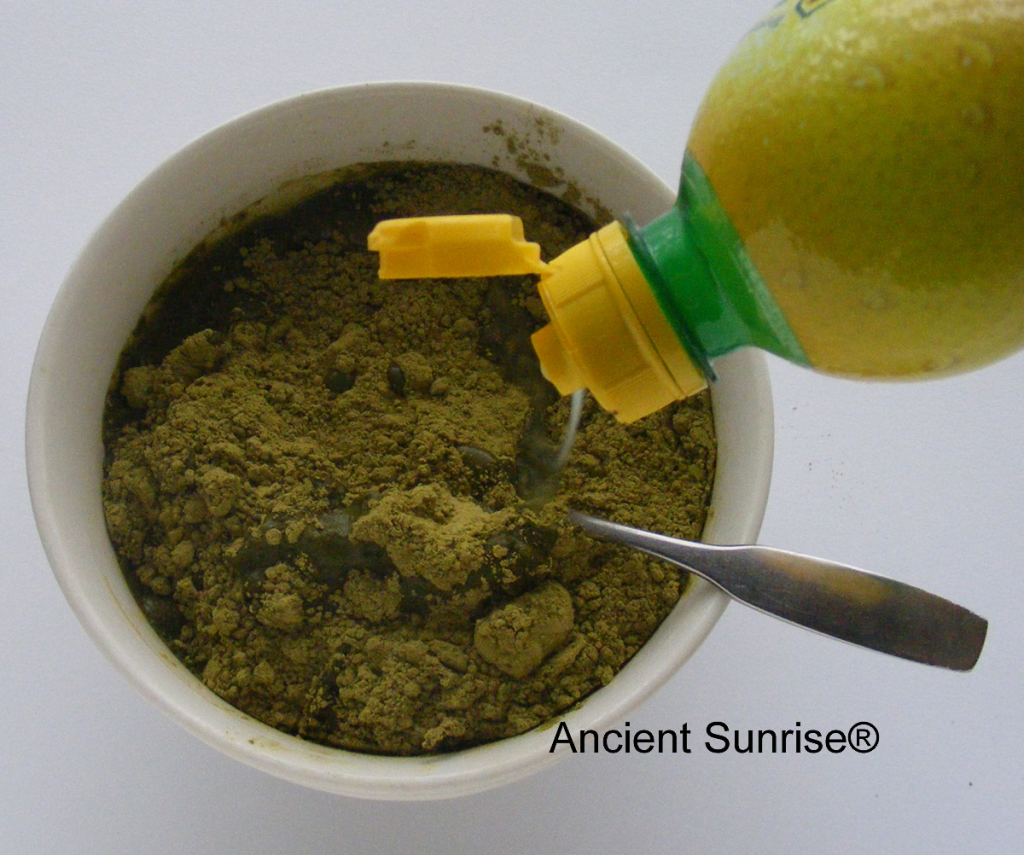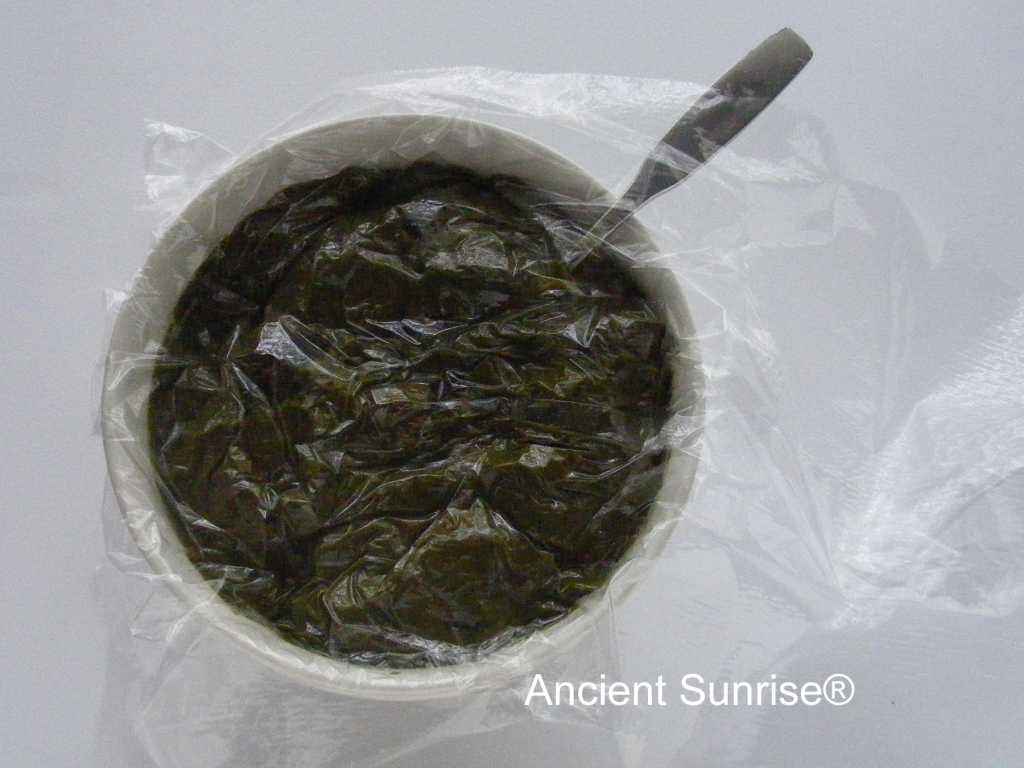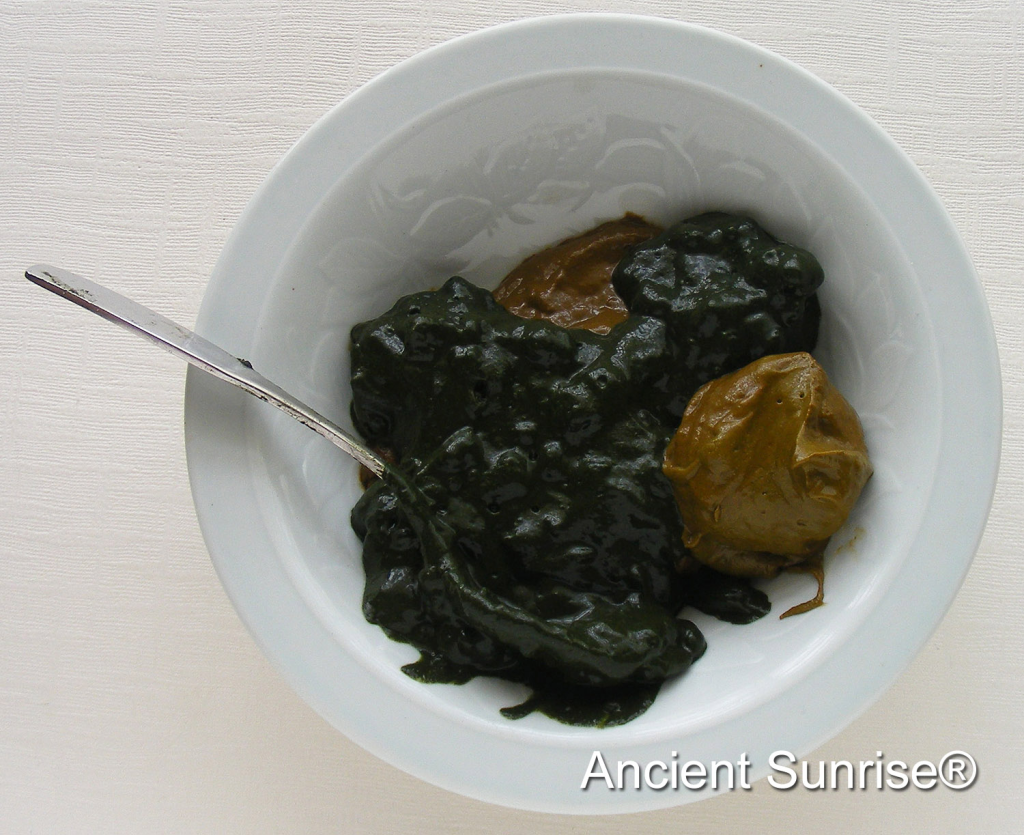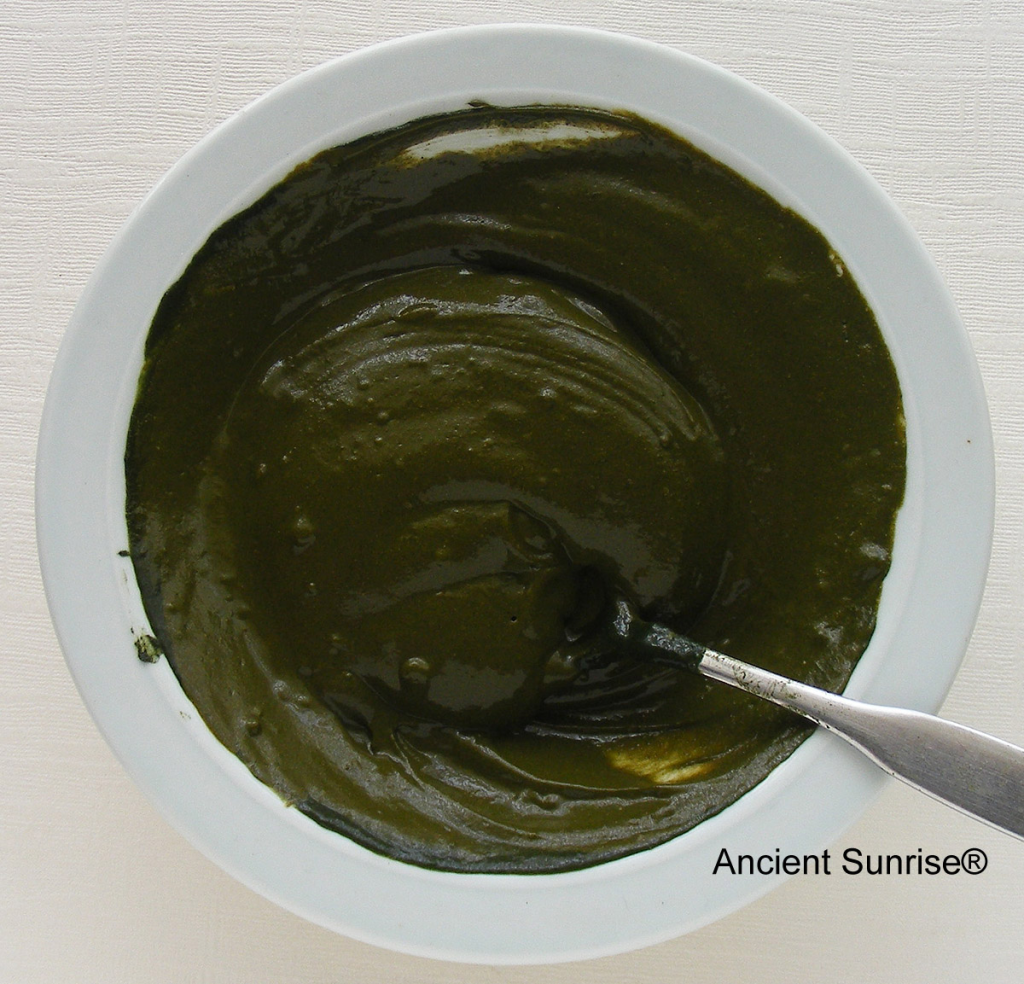
Well… you can if you really want to, but please keep it out of your henna.
If you’ve surfed around the internet looking for information on dyeing hair with henna, chances are that you’ve found dozens of articles and videos on how to create a henna mix for your hair, and many of them have told you to add any of a variety of things into the mix. How do you decide which to use? Should you add coffee? Should you add coconut milk? Eggs? Spices? Oils? Yogurt? Beet juice? The answer is no. And here’s why we say don’t put food on your head.
The obsession with using foods and other ingredients in henna mixes comes from a few myths:
First, there is the idea that henna is drying to the hair, and that some ingredients can prevent that. Henna does not ‘dry out’ hair, though it does raise the cuticle temporarily. Conditioner or a vinegar rinse will smooth it right back down.
Second is the idea that dark colored ingredients such as coffee or cinnamon will make your color darker, or bright red/purple ingredients such as beets or paprika will add those hues to your color. Beets and carrots may change the color of your bowel movements, but they won’t change the color of your hair.
Third is that spices and oils with strong scents will mask the smell of the plant dye powders and make your hair smell better.
Fourth is that the cosmetic industry puts pictures of fruit and herbs on their packaging to ‘greenwash’ the fact that their products are mostly chemicals. This gives people the impression that adding random ‘natural’ and ‘exotic’ things makes products better. It’s more complicated than that.
Because of all the misinformation floating around the internet, people get the idea that adding a bunch of extra ingredients into their henna mix will result in a super powerful, awesome conditioner/cleaner/dye paste worthy of the gods. It’s an attractive idea because you have these items in your kitchen already, and certain foods do have beneficial properties for hair and skin.
Spoiler alert: You’ll just end up with a lot of wasted food, and less of the benefits of henna….so say with me: don’t put food on your head.
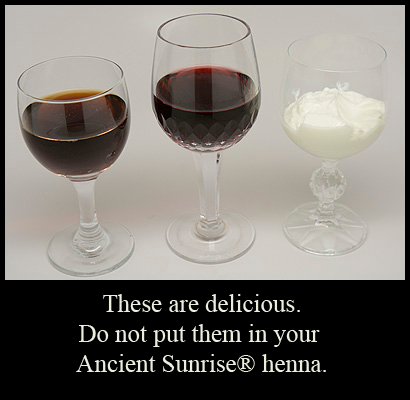
Here’s the Truth:
Henna is not drying, nor damaging.
Some notice that after rinsing their henna paste out, their hair feels crunchy, tangled, or dry. This is due to the temporary change of the hair structure after dyeing with henna. When the dye molecules migrate into the hair, the cuticle is raised up, making the hair seem rougher and coarser. As the dye molecules settle down into place, your hair becomes smoother again. This can take a couple of days, but you can help to smooth the cuticles back down by using conditioner, rinsing with cool water, and rinsing with apple cider vinegar.


If your hair feels gritty after henna, you may not have rinsed it all out. The easiest way to get all of that paste out is to fill your tub with warm water, and lay back, swishing your hair around. Massage a good handful of conditioner into your hair, rinse, and repeat until it feels soft. Contrary to popular thought, there is nothing keeping you from using shampoo, conditioner, or any other hair product right away. There is a myth that shampooing after henna causes the dye to fade; this isn’t the case. The dye binds to the hair during the three to four hours the paste is left on the head, and it is there to stay. Any color that tints the water going down your drain was residual dye.
The myth of henna being damaging to the hair comes from compound hennas, which are not pure henna. These are mixes that contain henna as well as other ingredients such as metallic salts, PPD, and other chemical additives. Compound henna is damaging to the hair, but pure henna plant powder is not.
As long as you are using 100% pure plant powder, adding coconut milk, oils, conditioner, honey, yogurt, egg or any other products to “moisturize” the hair is not necessary, and will prevent the dye from staining your hair.
Read Why Hair Feels Dry After Henna and How to Fix It for more about this topic.
Good quality henna is easy to rinse out.
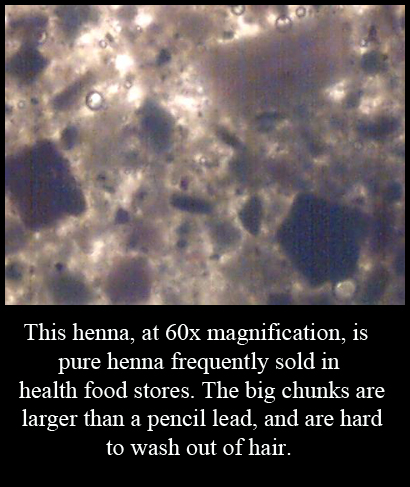
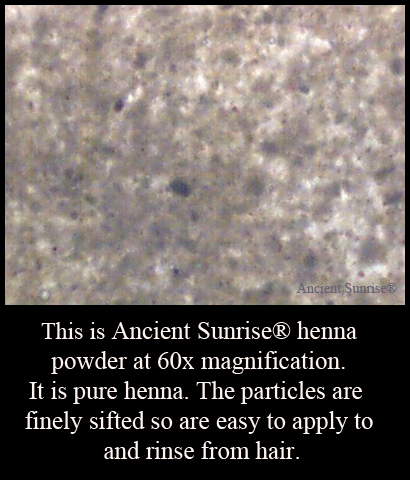
Another reason so many recipes have you digging around in your refrigerator is because much of the henna sold for hair is poorly sifted, full of leaf bits, twigs, sand, and other undesirably chunky bits. Adding oils, milks, fats, and other slippery ingredients are supposed to create a smoother henna paste that’s easier to apply and rinse out. In reality, oils coat the hair and prevent the henna dye molecules from effectively binding to the hair. Imagine dipping some fabric into oil, and then trying to dye it. The result would not be so great.
It’s easier to start out with high quality, finely sifted henna. That way, picking twigs out of your hair won’t be part of your henna routine.
Just because it’s brightly colored doesn’t mean it’ll dye your hair.
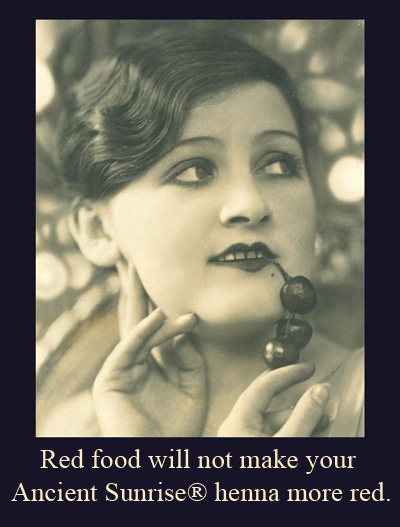
Beet juice, paprika, hibiscus, red cabbage juice, and any other number of bright red/purple ingredients will not make your resulting hair color redder or more burgundy.
Coffee will not make your hair darker or browner. But it will smell very strong and give you a headache. Caffeine is transdermal. It will enter your body through your skin, giving you some crazy jitters. Black tea, just like coffee, won’t change the color, no matter how strong you brew it.
These ingredients do not contain dyes that permanently change the color of your hair. In order to do that, a dye molecule needs to be able to bind into the keratin on your hair. When henna powder is mixed with an acidic liquid, the dye molecules become available in a form that can attach permanently to keratin. This process does not work with every substance. To check if an ingredient is capable of dyeing hair, read Does it Dye Hair? The Official List.
Some of these ideas come from techniques for fabric dyeing; people wrongly assume that if a plant or spice can dye fabric or wool, it will do the same thing on the hair. Dyeing fabrics with plants usually involve boiling the fabric and using a mordant, neither of which you’ll want to do with your hair.
If you want a brighter red, certain fruit acids will push the henna tone lighter, and prevent deepening from oxidation. Mixing henna and cassia will also result in lighter coppers and oranges.
If you want browner tones, add indigo. Fruit acids can also deepen your result. Amla mutes down the brighter orange tones. Nightfall Rose adds subtle ash tones.
Good Smells
Some people love the smell of henna, and others think it smells like wet dog or iron rust. For those who don’t like the smell, there are two things that can neutralize and mask it: ginger powder and cardamom powder. Ginger neutralizes, and cardamom adds a spicy sweet scent. Do not use cinnamon or clove, as they irritate the skin.
Many henna recipes recommend dye-releasing henna with herbal tea. Herbal tea, on its own, is not acidic enough to dye-release henna. There isn’t an issue with adding this as long as you have some other acidic component.
Essential oils can cause headaches and irritate the skin. Keep in mind that anything that is in your henna mix will be sitting on your scalp for several hours. And again, oils create a barrier against the dye. So resist the urge to dig into your stash of EOs when mixing up your henna. That stuff is pricy. Save it for other things.
“But it’s so natural and healthy!”
Healthy and natural lifestyles are on the rise. Throughout the internet, you see endless articles containing homemade face mask recipes that look more like recipes for something you might feed a baby (banana, oatmeal, avocado, egg…) and these ingredients end up on hair masks, as well. And then in henna mixes.
There’s nothing wrong with that, and sure, some food items are beneficial on the skin and in the hair. But henna on its own is strengthening and conditioning. Adding a bunch of other things prevents you from getting the full effect of the benefits of henna, not to mention causing a weaker stain. In the end, instead of creating some kind of super henna, you’ll end up having a weird smoothie that happens to also have henna in it.
Rule of thumb: A hair mask is a hair mask. Henna is henna. Both do their own special things for the hair, but keep them separate. If you really want to, wait until after you rinse your henna out, and then condition your hair with the contents of your kitchen. Or use those items to make lunch, instead.
If you only want conditioning benefits, Cassia would be a better choice than henna. You get the same conditioning benefits, without the color change. Remember to keep your cassia mix simple, too.
So what CAN you put in your henna?
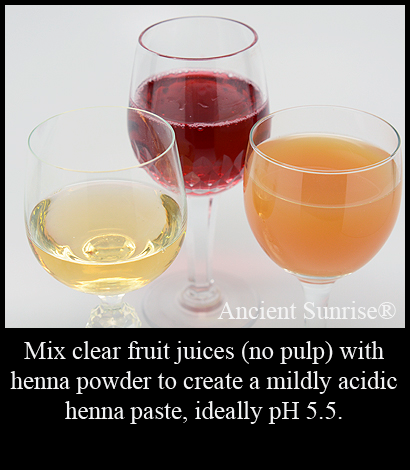
Very little. The simplest mix is often the best.
You will need something acidic to dye-release the henna and/or cassia. This can be a fruit acid powder, or fruit juice.
If you…
•don’t like the smell of henna, add a teaspoon of ginger or cardamom powder.
• are using indigo, a teaspoon of regular table salt for every 100g of indigo can help strengthen the dye.
• don’t like the smell of indigo, a spoonful or two of instant vanilla pudding powder will neutralize the smell.
To make indigo paste creamier and easier to apply, add a teaspoon of Ancient Sunrise® CMC powder.
And that’s it. That is why one of our most popular phrases at Mehandi is don’t put food on your head.
To learn more, read the Ancient Sunrise® Henna for Hair E-Book, and feel free to contact the Customer Service Representatives at www.Mehandi.com.

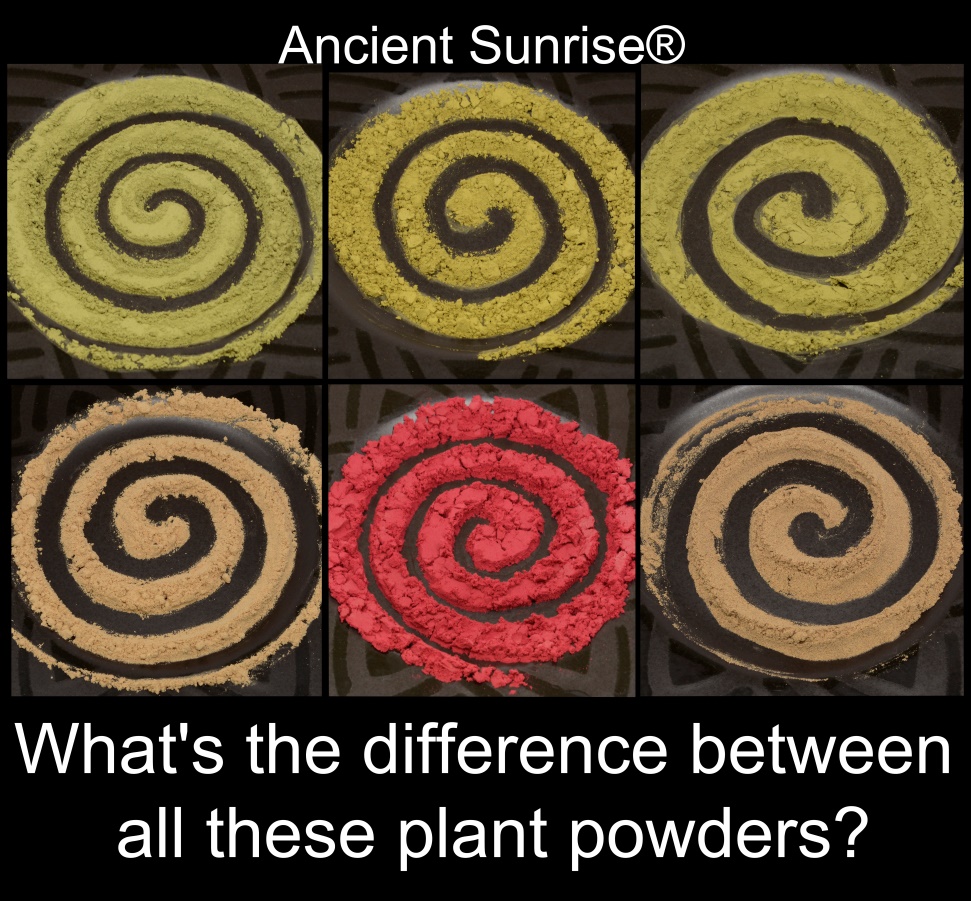 If you’ve read
If you’ve read 